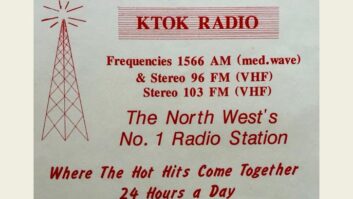What’s in store for the radio industry in 2018? Over the next few weeks, we’re publishing a series of interviews with thought leaders from around the globe in various segments of our business. We ask them to weigh in about specific trends and stories they’ll be watching this year. Frédéric Bourgeais is technical director of Alouette in Les Herbiers, France.

Radio World: What do you see as the most pressing technology challenge facing radio broadcasters in 2018?
Frédéric Bourgeais: When considering the French audiovisual landscape and specifically that of our regional radio station, a major technological challenge has been around for a while. We understood about 10 years that radio broadcasters needed to integrate IP technology. This is a vast area however and it forced us to modify and rethink our traditional IT structure, keeping in mind possible security issues, workflow requirements and the necessity for an adequate internet infrastructure to meet increasing demand. In addition, the move to IP has had a big influence on our listeners’ consumption habits. Today we know that radio — like most media — is primarily consumed via FM and IP platforms. We need to start focusing on the radio of tomorrow by integrating technical solutions, such as Radio DNS hybrid radio so we can offer our listeners hybrid broadcasts via FM, IP and DAB.
As far as Alouette is concerned, we currently use DAB to extend our FM broadcast coverage area. This helps us expand our programs but it comes with a cost, and it’s changing our targeted (advertising and local information) distribution business model.
FM radio in France was built around a model designed by the Conseil supérieur de l’audiovisuel, and while perhaps considered not perfect by some, it has worked for 37 years. With approximately 900 operators and 8,000 frequencies, CSA has made it clear that DAB digital radio in France should be used as a complement to FM. We understand that each country has its specific requirements and that standardization to a single model is not necessarily the right choice for everyone.
On a technical level, it’s important for us to stick as closely as possible to the listening habits of our audience, by providing maximum reliability and distribution quality of whichever type of signal and to be present on all possible media platforms.
RW: What consumer electronics trends will have the most impact on how consumers interact with radio and audio media?
Bourgeais: GAFA (Google, Apple, Facebook and Amazon) companies are developing more products to listen to online radio. Most of these products make use of one streaming source: “TuneIn.” It is important to offer a digital alternative in the face of this threat of media standardization on a single platform. The CSA must remain vigilant about this type of issue and propose technical decrees that give priority to the country’s broadcast radio stations. GAFA companies tend to think of radio as an old medium. It’s up to us, radio, to prove they’re wrong.
In addition, automobile manufacturers risk accelerating the migration of FM/DAB listening to connected solutions. Radio stations need to prepare for the migration of their business model to connected digital. DAB and DAB+ are already a back-end technology to IP-based and interactive solutions.
RW: What do you think will be the prevailing tech trends for the next three years?
Bourgeais:Radio DNS hybrid radio. This is likely to be one of the most important solutions to the challenges of connected digital. Radio needs to eventually become a hybrid medium. Also, the use of LTE broadcast to offer a hybrid radio model in France between FM/DAB+ and IP zones.
RW: What major technologies are affecting the radio industry on a global level?
Bourgeais: White areas of ADSL/SDSL and fiber connectivity are a problem. Territories in France are not equally covered as regards the distribution of IP/fiber connectivity, particularly in rural areas. In fact, some areas have no connection at all. In order to improve the quality and consistency of services, it is essential to have a backup IP connectivity solution able to step in should a satellite link no longer be available. It is also important to be able to remotely monitor all equipment in real time. Fortunately, according to Secretary of State, Julien Denormandie, during the next three years France’s four mobile operators will invest more than 3 billion euros in an attempt to eliminate the country’s “white areas.”
RW: Where do you learn about new technology each year, what trade shows or information sources?
Bourgeais: Events, such as le Salon de la Radio and IBC, as well as industry trade publications and professional social networks such as LinkedIn.
RW: What else should Radio World readers keep on their radar? Here we move away from technology.
It’s important for everyone in the industry to keep an eye on internet and chipset advances as well as electronic chip manufacturers.







